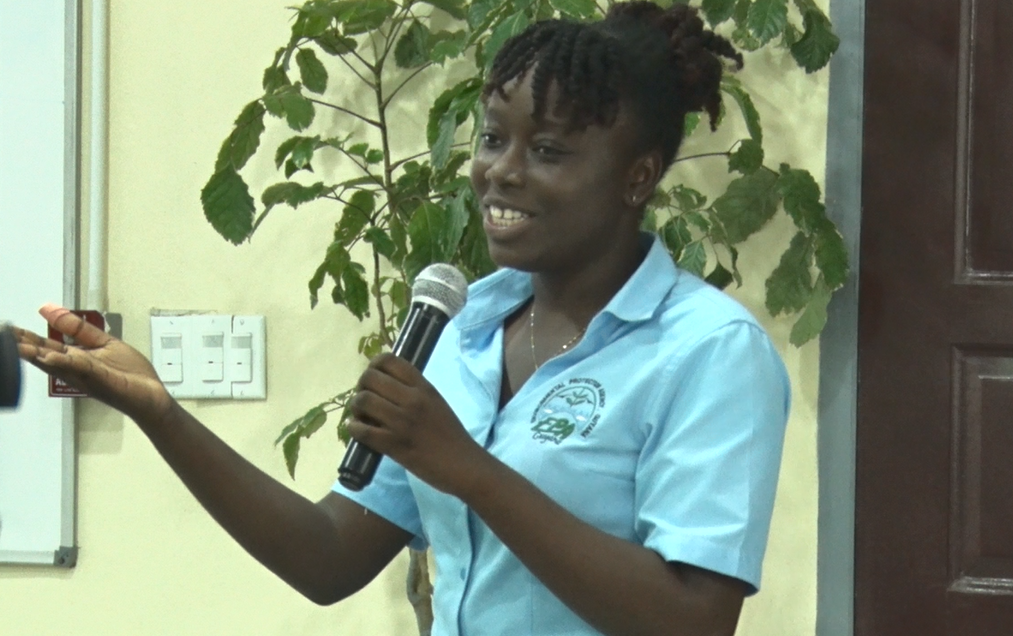Suphane Dash-Alleyne, a University of Guyana (UG) student/researcher, urged authorities to incorporate a plastic waste management system in mangrove restoration efforts because these plants that protect the coast are being destroyed by improperly-disposed plastic bottles.
While presenting the findings of research done on the microplastic and macroplastic distribution within the Greenfield mangrove site along the East Coast of Demerara (ECD), Dash-Alleyne said the plastic bottles are trapped by mangroves.
Those bottles then suffocate the roots, inevitably killing the mangroves.
To save the mangroves, the Faculty of Earth and Environmental Sciences student suggested that the authorities integrate a plastic waste management plan into the country’s ongoing Mangrove Restoration Project.
“Everybody says ‘Don’t remove the mangrove, don’t cut down the mangrove, don’t burn the mangrove’, but (the message) ‘Do not dump within the waterways that lead to the mangroves’ needs to be emphasised.

“It is recommended that authorities develop policies and strategies aimed at reducing the use of single-use plastics….Bottles are something that we shouldn’t have an issue with because there are numerous reusable water bottles that we can buy,” Dash-Alleyne said at a conference held on Tuesday at the University’s Turkeyen campus.
For context, single-use plastics are those plastic products that are only used once, often for a short period of time, and then discarded.
The student opined that single-use plastics should be limited or banned because of their harmful impact on the environment. She also highlighted that there are numerous alternatives to single-use plastics; for example, plastic bottles can be replaced with reusable bottles.
In her presentation, the student also noted that with the rapid increase in people’s consumption and inadequate waste management avenue, improperly disposed plastics go through drainage systems and are carried to rivers, seas and oceans.
Eventually, they make their way into marine ecosystems where mangroves grow.
“That means, as the tide comes in and the plastics are brought into the mangrove environment, it is more than likely going to get trapped in the high tide region and it’s going to stay there for a significant amount of time until it breaks down into microplastics,” she explained.
These aren’t just assumptions or theories.
For her research, she focused on the site which is the NAREI Mangrove Restoration project. Bottles, lighters, and cups were among the items that were washed into the environment and then trapped by the mangrove roots. There, 38 microplastics were found in mangroves.
Beyond this site, it was found that some 10,680 plastic bottles were found during a 2019 national cleanup exercise; over 36,000 plastic products were found during that exercise.
This research is important because while it confirms some of what is known about plastic pollution, it guides best practices. The issue at hand affects other marine ecosystems which consume the plastic and humans then consume the marine animals.
“The impact of microplastic on your health is still unknown and it is now being studied. We do not know what can happen to us especially when consuming it.
“Many of us are trying to go to this healthy diet of eating fish more but what is in the water when we eat the fish?,” she said.






